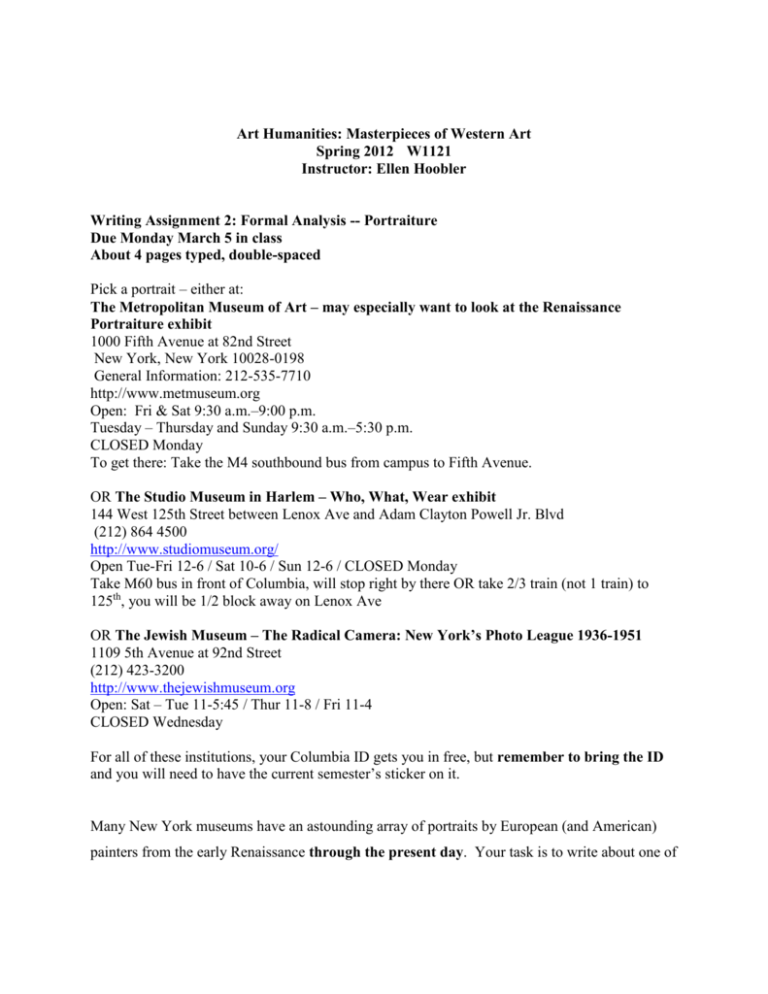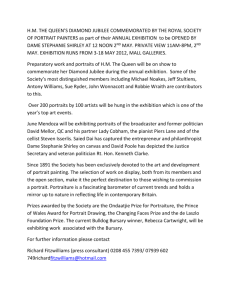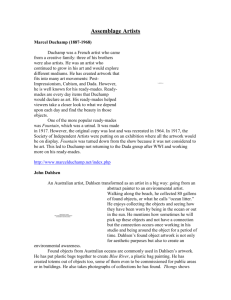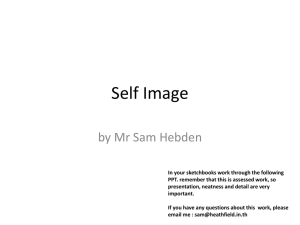Art Humanities: Masterpieces of Western Art - arthumanities
advertisement

Art Humanities: Masterpieces of Western Art Spring 2012 W1121 Instructor: Ellen Hoobler Writing Assignment 2: Formal Analysis -- Portraiture Due Monday March 5 in class About 4 pages typed, double-spaced Pick a portrait – either at: The Metropolitan Museum of Art – may especially want to look at the Renaissance Portraiture exhibit 1000 Fifth Avenue at 82nd Street New York, New York 10028-0198 General Information: 212-535-7710 http://www.metmuseum.org Open: Fri & Sat 9:30 a.m.–9:00 p.m. Tuesday – Thursday and Sunday 9:30 a.m.–5:30 p.m. CLOSED Monday To get there: Take the M4 southbound bus from campus to Fifth Avenue. OR The Studio Museum in Harlem – Who, What, Wear exhibit 144 West 125th Street between Lenox Ave and Adam Clayton Powell Jr. Blvd (212) 864 4500 http://www.studiomuseum.org/ Open Tue-Fri 12-6 / Sat 10-6 / Sun 12-6 / CLOSED Monday Take M60 bus in front of Columbia, will stop right by there OR take 2/3 train (not 1 train) to 125th, you will be 1/2 block away on Lenox Ave OR The Jewish Museum – The Radical Camera: New York’s Photo League 1936-1951 1109 5th Avenue at 92nd Street (212) 423-3200 http://www.thejewishmuseum.org Open: Sat – Tue 11-5:45 / Thur 11-8 / Fri 11-4 CLOSED Wednesday For all of these institutions, your Columbia ID gets you in free, but remember to bring the ID and you will need to have the current semester’s sticker on it. Many New York museums have an astounding array of portraits by European (and American) painters from the early Renaissance through the present day. Your task is to write about one of the portraits in this collection and to consider what statement the artist is making about his sitter through a close visual analysis. Formal analysis of portraits is particularly rich in getting at what Shearer West calls the artist’s attempt to express some internal identity as well as external form. Preparing to write: Take notes while in front of the painting. Try to do as much writing as you can in front of the object – it will be easier than trying to remember what you saw later on. Consider these questions as a starting point: Who is the subject of this portrait? If you do not know the name or title of the sitter, can you guess at his or her social position/ status? What clues does the artist give you? What features/ characteristics/ elements has the artist chosen to emphasize/ deemphasize? Why? Think about the relationship between you, the viewer, and the painting. Is this work meant to be seen from close-up or farther away? Is there an “optimal” viewing position? What elements do you notice first? How does the artist encourage your interaction with the sculpture and the space around it? You may choose any Western art portrait on display which is from 1500-1950. Plan to spend at least an hour at the museum. Spend some time walking through the rooms and taking in the entire collection before you make your choice. You’ll then want to spend time in front of your chosen portrait. Get up as close as the guards will allow; as long as you keep your arms behind your back, they shouldn’t make too much of a fuss. As always, a successful essay will: Present a specific, focused and compelling argument / thesis statement that considers the relationship between the form of the work of art and its meaning; Give a detailed description of the entire work of art in a structured, organized fashion, focusing on the aspects that you think are most pertinent; Follow the general guidelines for writing in this course (refer to Terms of Art, writing presentation). ***Please also include a reproduction of your chosen image (a b/w Xerox from a book, cellphone photo or computer print-out is fine). If you wish to conduct outside reading in preparation for your essay, you may do so. HOWEVER, stay away from Wikipedia or other non-scholarly Internet resources. A good resource is the Grove Dictionary of Art Online, which you can access through Columbia’s LibraryWeb (search Databases). Remember, the focus of your paper should be on the painting itself and should not be a report on the artist’s and/or subject’s biographies. If you choose to refer to sources in your essay, whether by direct quote or paraphrase, be sure to cite your source. If you have any questions about how or when to cite sources, please ask me. Organization State your argument at the beginning of the paper. Introduce the artwork with a brief general description, after which all description should be in service of your argument. Order your points logically. Style Take an objective tone, avoiding first-person narrative. Avoid unnecessary repetition. Proofread for spelling, grammar, and style. Cite all outside sources either with parenthetical references or footnotes (see footnote below for appropriate citation style). From the Columbia College Policy on Academic Honesty: Plagiarism and Acknowledgment of Sources Columbia has always believed that learning to write effectively is one of the most important goals a college student can achieve. Whether students major in the humanities, the social sciences, or the natural sciences, they will be asked to do a great deal of written work while at Columbia: term papers, seminar and laboratory reports, and analytic essays of different lengths. These papers play a major role in course performance, but more important, they play a major role in intellectual development. Every year there are instances in which students attempt to submit the work of other people as their own. Because intellectual integrity is the hallmark of educational institutions, academic dishonesty is one of the most serious offenses that a student can commit at Columbia. It is punishable by suspension or dismissal from the College.











